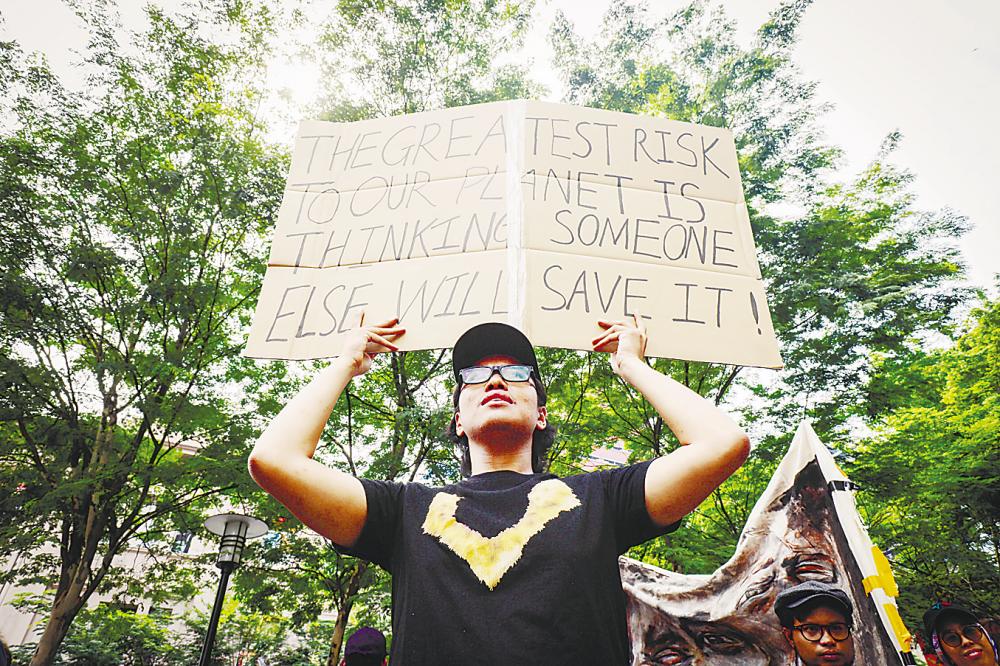IN 2006, former US Vice President Al Gore released An Inconvenient Truth, a gripping visual and literary presentation that opened millions of eyes to the growing threat of global warming.
It was more than just a book; it was a wake-up call. For me, it held a personal weight. My late father owned a copy, its pages worn and corners folded from repeated readings. He used to say: “The planet speaks – we just need to listen.”
Once upon a time, the world was worried about the thinning ozone layer. Schoolchildren were taught about the dangers of CFCs or chlorofluoro-carbons and how they punched holes in our atmospheric shield.
The world banded together, signed the Montreal Protocol, and slowly, we began to heal the ozone. That success gave us a sense of triumph; a belief that we had solved the big environmental problem of our time.
However, as years passed, a new threat emerged – climate change. Unlike the ozone issue, it did not come with a single chemical to ban. It was complex, inconvenient to our modern lives and easy to ignore.
We dismissed the warnings, called it seasonal heat and built bigger drains. But the weather has changed. It is no longer something we can plan around. It is something we are forced to react to.
Unpredictable weather patterns
Malaysia is no stranger to rain and heat but recent years have seen more erratic shifts. According to the Meteorological Department, average temperatures have steadily increased across the country.
What used to be predictable seasons are now punctuated by long droughts and intense downpours. Even experienced forecasters struggle with the increasing volatility.
Monsoon extremes and flooding
Once dependable, the monsoon now brings destruction. Between November 2024 and January 2025, over 122,000 people were displaced by floods in Kelantan, Terengganu and Sarawak.
Homes disappeared, roads collapsed and shelters overflowed. These disasters now recur annually, bringing with them massive economic losses and social disruptions.
The Irrigation and Drainage Department has stepped up mitigation efforts but infrastructure alone cannot stop climate extremes without addressing root causes.
Emergence of tornado-like phenomena
Malaysia is not known for tornadoes, yet in March 2025, Sekinchan, Selangor, experienced two twisters within a week. The second incident damaged over 30 homes.
Experts said this may become more common due to warmer temperatures and shifting wind patterns. These events show that climate disruptions are no longer limited to familiar patterns – they are evolving fast.
Health and economic impacts
Rising heat brings more than discomfort – it brings health risks.
Heat-related illnesses are increasing. Agriculture and fisheries, critical to rural economies, suffer from unpredictable yields. Food prices are climbing. Jobs are lost. Livelihoods are destabilised.
National policy and international commitments
Malaysia has pledged to reduce its greenhouse gas emissions intensity by 45% by 2030. The national climate change policy emphasises green technology and urban resilience. Under the 12th Malaysia Plan, steps are being taken towards low-carbon initiatives and disaster risk reduction.
Yet, implementation faces hurdles like bureaucratic delays and lack of public awareness that often slows progress.
Small actions, big impact
As Al Gore emphasised, change begins with individuals. Here is how we can help:
Use energy wisely: Switch to energy-efficient appliances and unplug devices.
Travel smarter: By walking, biking or taking public transport.
Waste less: Refuse single-use plastics. Compost and recycle where possible.
Support renewables: Encourage solar energy adoption at homes and in our community.
Conserve water: Fix leaks. Use water-saving taps.
Promote awareness: Engage in conversations about climate issues and support environmental NGOs.
Listening to the Earth
My father treasured An Inconvenient Truth not just for its facts but its heart. “The science is there”, he said, “but what matters is whether we care enough to act”.
Malaysia is already seeing the effects of climate change – in our skies, on our land and in our communities.
The Sekinchan twister, the floods, the sweltering heat – these are no longer warnings. They are consequences.
Let this serve as a reminder and a call to action – a pledge that we did
not stay silent when the storm arrived. Because it is already here.
Dr Jehana Ermy Jamaluddin is a senior lecturer at the Department of Electrical and Electronics Engineering, College of Engineering and director of the Centre for Academic Advancement and Flexible Learning, Universiti Tenaga Nasional. This article is written in loving memory of Allahyarham Datuk Dr Jamaluddin Md Jahi, the beloved father of the writer, in honour of the legacy he so passionately lived and left behind.
Comments: letters@thesundaily.com









